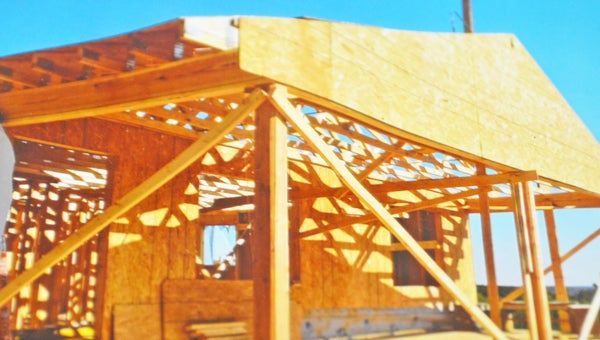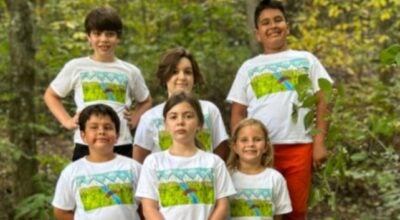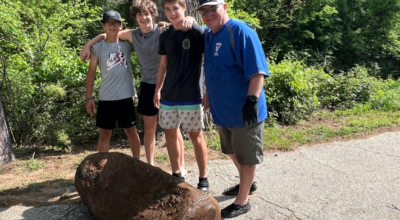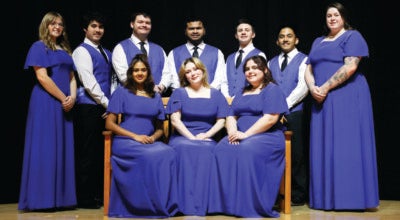Home ownership uplifts Habitat partners
Published 6:03 pm Friday, December 27, 2013

A Habitat home in the framing process. (photo submitted)
“Wonderful, wonderful, wonderful,” Pat Morrison said, because she has found a warm and secure home thanks to her own hard work and the goodness of Thermal Belt Habitat for Humanity. “Every day, I’m really pleased and happy with my new home. I don’t know of anything that could have made me happier.”
Amanda Ruff partnered with Habitat, too, and she says, “I love it that I have a home now. Other places were places to live, but this place is my home.”
Thermal Belt Habitat for Humanity partners with community members who want to own their own homes, but need extra support to get that work done. Ruff and Morrison each own three bedroom, one and a half bath houses now, about 1,100 square feet.
“I like the sense of ownership,” Ruff said. “Owning a house means you want to take care of it as yours; you want to keep it up. I’ve rented most of my life. When you rent a place, you have to ask if you can paint. You might sweep the porch, but it’s a different feeling to sweep your own porch.”
Morrison moved into her house in October 2011, and Ruff moved into her house in April 2012. They both enjoy taking care of their new homes and simply being there.
“My house is white with dark green shutters and cedar posts; it’s really beautiful,” Ruff said. “I like taking care of it. I’ve had some lattice put up and the concrete painted a pretty chocolate brown. I live on the side of a hill with an awesome view. I love the view so much. I would like to do more with the house in the future, as I get more money together.”
Thermal Belt Habitat for Humanity has a strong policy on finding the right partners for the houses. To qualify, partners must have a need for safe and healthy housing with an adequate number of bedrooms. They also need to have lived in Polk County, N.C., or Landrum, S.C., for at least one year. Ruff needed a better, warmer place with more room for herself and her son.
“My little boy is eight years old, and he loves the house,” she said. “Before we moved here, he and I needed to share a room. We had bunkbeds.”
Morrison has three children, all grown up now, and two of them live in other states. One son, who has a disability, lives with her.
Morrison said, “I raised my children in a mobile home, and I have nothing against that, but living in a house has been such a great experience and such a blessing to me. I have windows, and I love windows. I have more space. I’m not cramped, and it isn’t very hard to find someone to come out here to do work. It was hard to find someone to work on my mobile home. Mine was a 1981, so parts were hard to come by. I kept it up the best I could.”
As winter begins, the two families also appreciate the warmer living conditions in their new houses. Habitat for Humanity houses have central heating and good insulation.
“It’s so nice to be warm here,” Ruff said. “I lived in a singlewide trailer, a 1968 model, and it was so cold there. I had power bills over $300 and we still felt cold. It’s so nice to be warm and power bills only $110. The house is really energy efficient, with double pane windows. After living with single pane windows, I can tell you that it really makes a difference. The heat just went out of those single pane windows.”
Habitat partners have to supply 200 hours of sweat equity with Thermal Belt Habitat for Humanity.
Ruff did the work for her house as a volunteer at the Habitat Resale Store and also helped paint rooms for another Habitat partner’s house. Morrison’s oldest son helped with the first 40 hours of her sweat equity, and she completed the other 160 hours.
“I was so determined to make it work. Whatever it took to make it work, I was willing to do it,” Morrison said. “You’ve got to have a willing heart to get out there and work and hang in there. It’s a work in progress.”
Partners begin by applying through Thermal Belt. Anyone can pick up an application at the Thermal Belt Habitat for Humanity ReStore, 132 N. Trade Ave. in Landrum, and start the process. The organization continually looks for qualified partners who need better housing and will put in the work necessary to complete the process.
“It took a long time after the initial application, two years and almost three,” Ruff said. “After the paperwork process, I completed my sweat equity by working at the Resale Store. I did whatever needed done – cleaning, stocking, moving things. I also helped another Habitat homeowner paint a different home.”
Ruff and Morrison offered advice for others who would like to partner with Habitat for Humanity.
“I think the best thing to do would be to talk with somebody who owns one, and see the house to make sure it suits you,” Ruff said. “Habitat builds affordable houses, but not mansions. This house is 1100 square feet. I don’t want one any larger.”
Morrison emphasized that no one should be afraid to reach for the dream of home ownership.
“I thought maybe I was too old to take it on,” she said. “At this point in life, many people are ready for retirement. Then I thought, why not give it a try? And I did, so here I am. If you set your mind to doing something, you can get it done. Hang in there and do the best you can do, even when you feel like nothing’s happening. Just don’t give up, because the answer is coming. It’s not something that happens overnight, because it’s a process. Be willing to wait, be willing to work, and keep your faith.”
For Ruff and her son, and for Morrison and her son, partnering with Habitat for Humanity became a dream come true.
“I am tremendously happy and I thank God to this day for this house and the people of Habitat,” Morrison said. “Everybody dreams of having their dream house. My dream was to have a house. And now I do.”





